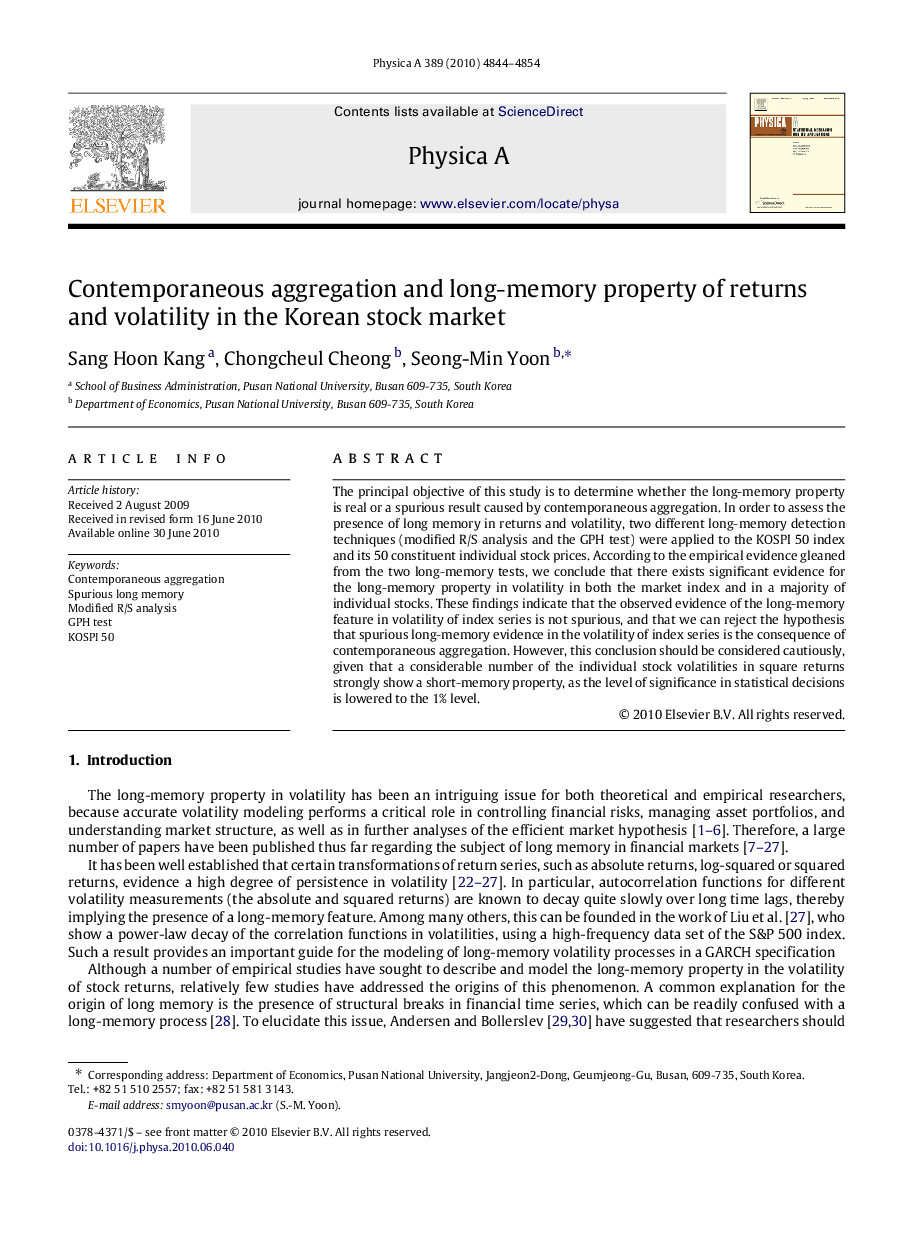| Article ID | Journal | Published Year | Pages | File Type |
|---|---|---|---|---|
| 978903 | Physica A: Statistical Mechanics and its Applications | 2010 | 11 Pages |
The principal objective of this study is to determine whether the long-memory property is real or a spurious result caused by contemporaneous aggregation. In order to assess the presence of long memory in returns and volatility, two different long-memory detection techniques (modified R/S analysis and the GPH test) were applied to the KOSPI 50 index and its 50 constituent individual stock prices. According to the empirical evidence gleaned from the two long-memory tests, we conclude that there exists significant evidence for the long-memory property in volatility in both the market index and in a majority of individual stocks. These findings indicate that the observed evidence of the long-memory feature in volatility of index series is not spurious, and that we can reject the hypothesis that spurious long-memory evidence in the volatility of index series is the consequence of contemporaneous aggregation. However, this conclusion should be considered cautiously, given that a considerable number of the individual stock volatilities in square returns strongly show a short-memory property, as the level of significance in statistical decisions is lowered to the 1% level.
